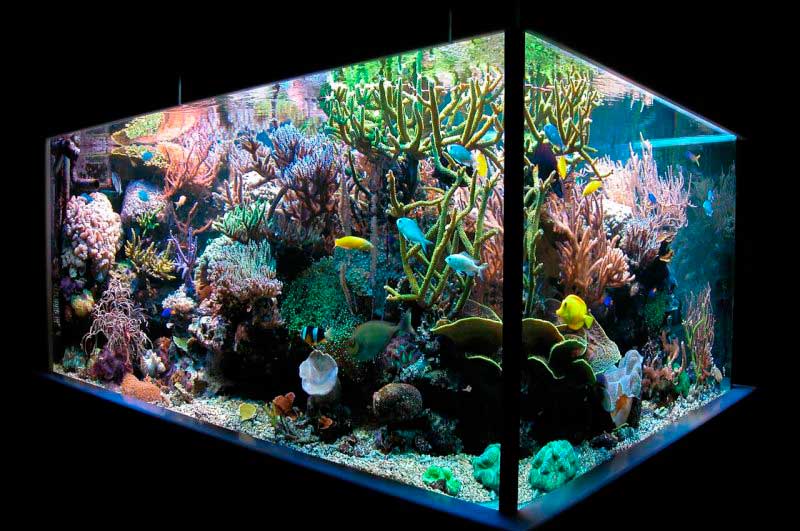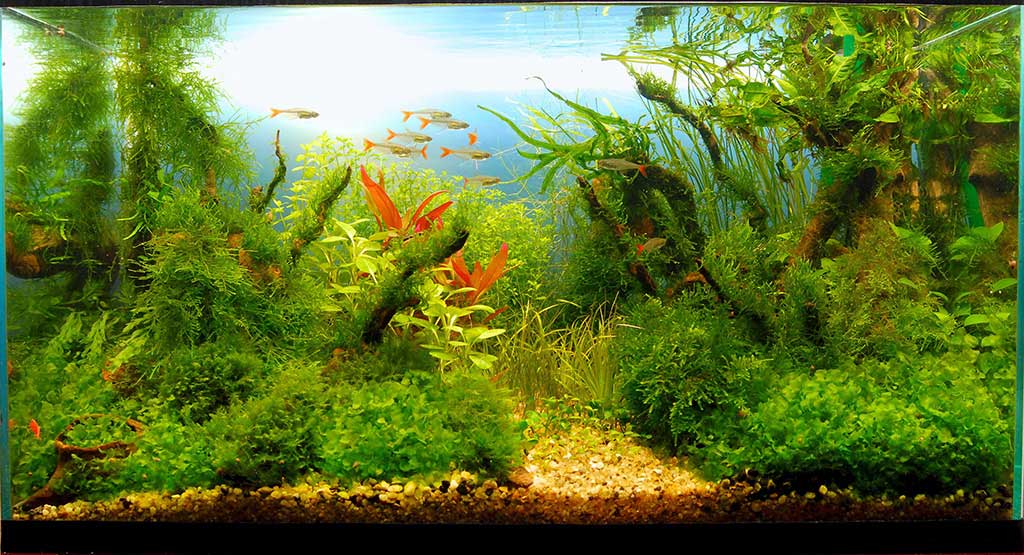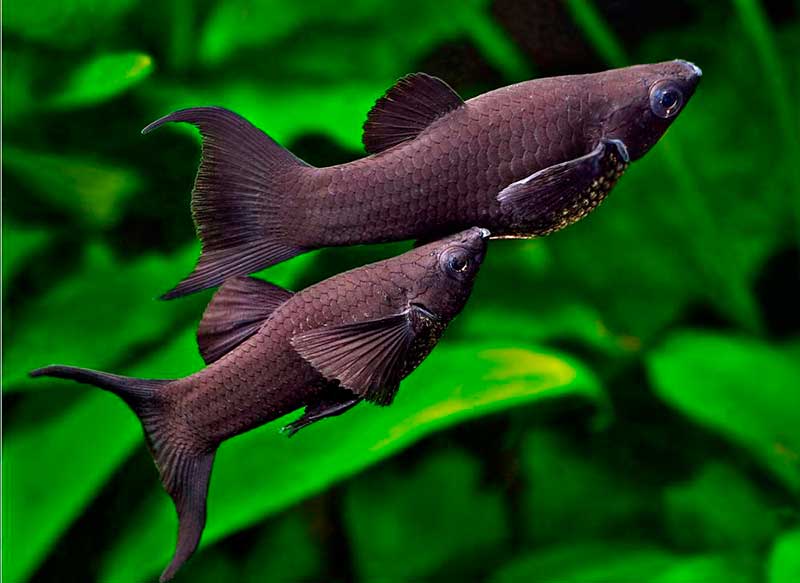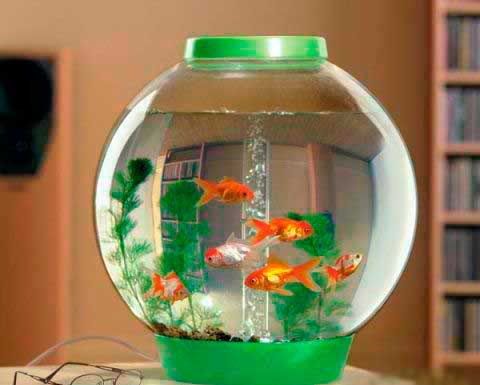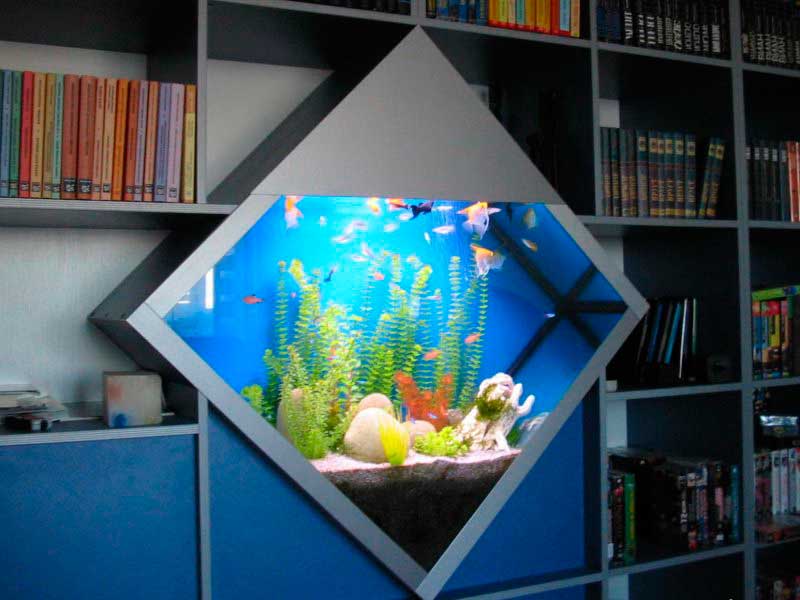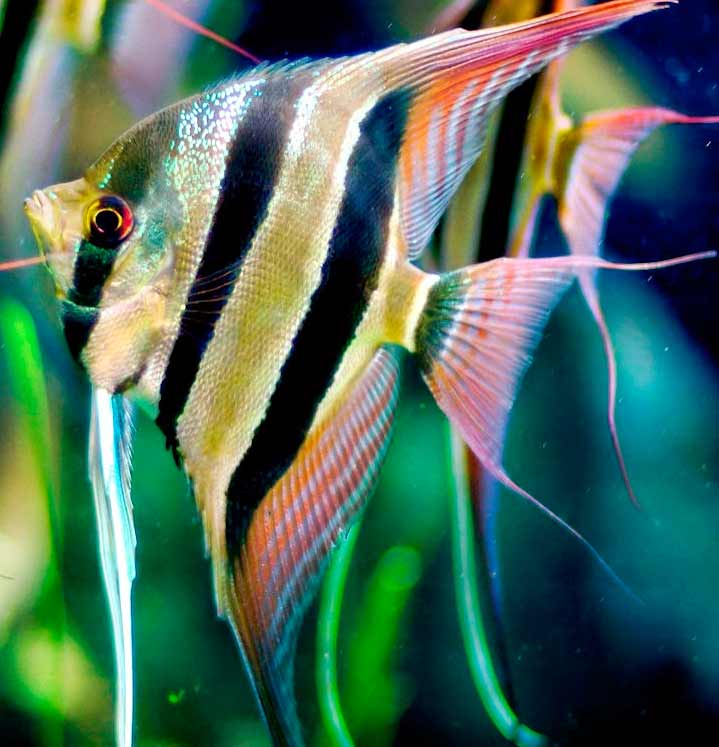Aquariums are a popular hobby for lovers of fish and other aquatic life. They offer the opportunity to create miniature aquatic worlds in the home, providing joy and relaxation for their owners. However, before diving into this fascinating world, it is important to understand what types of aquariums exist and consider their features. Let’s take a look at the classification of aquariums and their main types.
Aquariums: Classification in form
- Rectangular aquariums are the most common type, usually having a rectangular shape and glass walls. They are available in a variety of sizes, ranging from the smallest to huge.
- Cylindrical aquariums represent a cylinder. They are more compact than rectangular aquariums. They can be a great addition to the decor and are ideal for small spaces. This can probably include the common glass three-liter canning jar, which has played the role of the first aquarium of more than one amateur aquarist.
- Balloon aquariums are very decorative. But usually have a relatively small size. This is due to the technology of glass ball manufacturing. It imposes its own limitations on the size of the product. Therefore, the volume of a round aquarium is usually limited to a few tens of liters.
- Aquariums of any geometric shapes that you have enough imagination. Triangular, square, hexagonal and octagonal, star-shaped aquariums with different number of rays. Modern technologies of gluing glass and transparent plastics allow you to realize almost any form of aquarium.
It should be remembered that the aquarium is a habitat for living creatures that need constant care. Considering this, many generations of aquarists have come to the conclusion that the most convenient shape for a home aquarium is rectangular.
Aquariums: Classification by size
- Small – from one to ten liters. These are aquariums for keeping small fish that need a small amount of living space. Small aquariums can also often serve as spawning and nursery tanks.
- Medium – from a few dozen to a hundred liters. This is probably the most suitable aquarium size for a small apartment. It will not take up too much space. At the same time, most fish species will be quite comfortable in it.
- Large aquariums – from a hundred liters to several hundred liters. Such aquariums are necessary for keeping some species of cichlids. In addition, from – because of their size require additional equipment to care for it. Well about the space they occupy in the room to talk about I think unnecessary. Although there are enough amateurs who agree to live in one room with an aquarium that takes up about half of it. But it seems to me that these are still extremes, from which you should stay away.
By water salinity
- Freshwater aquariums: These aquariums contain only fresh water. And are suitable for most aquarium fish species as well as many other aquatic life such as crayfish and molluscs. Freshwater aquariums are much easier to equip, maintain and care for. This is why most indoor aquariums are freshwater aquariums.
- Marine Aquariums: Contain ocean or marine type water and usually require more care and maintenance. They are designed for different types of marine fish and corals. If you are a fanatic aquarist or you want to keep some kind of marine fish or corals in your aquarium, then of course you will have to get a marine aquarium. In all other cases I think it is better to equip a freshwater aquarium. Care for him much easier and cheaper. However, this is only my humble opinion.
Aquariums: Classification by installation method
- Tabletop aquariums: These aquariums are placed on a horizontal surface supported by stands or pedestals. They provide easy access for care and maintenance. They are the most common type of aquariums.
- Built-in aquariums: These aquariums are built into walls or furniture and integrated into the interior design. They create an impressive and stylish look, although they may require more complicated installation. They are also more difficult to care for than the tabletop version.
- Picture aquariums: These aquariums hang on the wall like a painting. Due to the design features of the hanging, they rarely have a volume of more than ten to fifteen liters. In addition, their width to length ratio is not the most ideal. They are also difficult to maintain. Nevertheless, in some interior design solutions they can be a very attractive solution.
By specialization
- Decorative aquariums. I think I will not be wrong if I say that ninety-nine percent of indoor aquariums are decorative. Their main task is to be beautiful and please the eye and warm the soul. Often in these aquariums are trying to get along with different species of fish. Sometimes not compatible. Anyway, this is the main type of aquariums for beginners and many experienced amateurs.
- Biotope aquariums are aquariums that try to replicate as much as possible the underwater landscape. For example – a model of a tropical lake. I hope for a basis take a body of water from the past, and not modern polluted with waste and plastic.
- Grow-out tanks. If you are fortunate enough to breed your pets, you will soon need grow-out tanks to hold the growing fry. After all, as they grow, any living organism needs more living space. These containers do not have to be aquariums. As long as you find somewhere to attach the young fish can be kept in any suitable container – pot, plastic basin, bathtub. Who said it would be easy?
- Dutch or herb aquarium. I do not know why, but we have aquariums that are populated exclusively by plants called Dutch. Maybe because the one who called them so first saw such an aquarium in Holland. Was this aquarium immediately conceived as a container with plants. Or there fish just died out, and plants have grown to ugly history is also silent. One way or another room reservoirs that contain only plants also exist. These underwater gardens have no less advantages than the classic decorative aquarium.
Also in laboratories engaged in research of aquatic organisms there are specialized aquariums, specially equipped for one or another purpose. But this is beyond the scope of this article.
Aquariums: Classification by material of manufacture
- Glass aquariums are the majority of modern aquariums. Since glass is the most durable, transparent and environmentally friendly material, it is still the preferred material for fish tanks.
- Made of transparent plastics. These containers are also represented by quite a large number. And as the technology of their production improves, the share of aquariums made of plastic is likely to increase. Plasticity of this material allows you to give it any of the most bizarre shape. The limitation may be their resistance to water and scratches.
Based on the above, I will allow myself to give advice to people who are choosing their first aquarium in their lives. Take a glass rectangular volume of several tens of liters. When you gain experience and decide on your favorite fish then you can already decide what aquarium you will have the next.
Choosing the right type of aquarium depends on your preferences, available space, budget and level of experience. It is important to remember that regardless of your choice, providing suitable housing and care conditions is key to the health and well-being of your aquatic pets.
